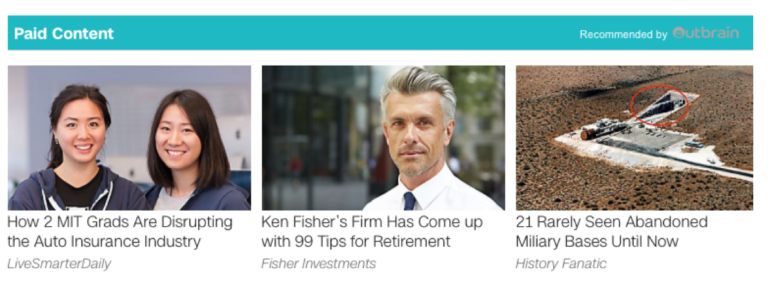4 Content Distribution Channels for Your Healthcare Content Marketing Strategy
Here’s what to do when traffic is a trickle, instead of a flood.

You have a well-designed site, you’ve written timely, relevant content and you’ve toiled over your on-page SEO. There should be a flood of new traffic, but it’s a trickle instead. How can you get your healthcare content marketing to perform?
Ranking organically is never easy — and you should question anyone who tells you otherwise.
So how do you get your content in front of the right people starting today? Create and execute a strategic content distribution plan that includes a variety of paid and organic channels. We’ve outlined a few of our favorites here.
1. Google AdWords
When people think of AdWords, they usually think of promoting their hospital or its services. But it doesn’t have to stop there; you can create campaigns to promote your content, too.
Let’s say someone searches the keyword, “symptoms of hand foot and mouth disease.” Now, you can hope that you have content that ranks for this organically, or you can target this keyword in AdWords.
We’ve run campaigns for clients that had CTRs as high as 25 percent and our CPC has been as low as $0.30. Moreover, by targeting a variety of topics we have been able to effectively reach a diverse audience of readers. In fact, it’s normal for 90 percent of AdWords traffic to be new users.
This channel will effectively drive hundreds of new readers to your content hub or blog each month. If you have your site set up to effectively capture emails and new patients, you will be able to drive returning readers to your site and patients to your clinics.
2. Outbrain
There are countless content distribution networks you can take advantage of for your healthcare content marketing plan. And while many work well, Outbrain is one of our favorites. Outbrain allows you to promote your content on publisher sites around the web and serves contextually related content to users.

Some marketers may be reluctant to test Outbrain because they fear low traffic quality. In many cases, Outbrain engagement metrics have outperformed that of other paid distribution channels and delivered a lower CPC. And if optimized correctly, Outbrain traffic can be equal to our overall site averages for bounce rate, session duration and pages per session.
3. Facebook Advertising
Facebook is often a first stop to share content — and for good reason. It offers a low CPC and enables marketers to easily pinpoint the target audience, something that you can’t really do with the previous two channels. Facebook’s targeting is one of its greatest strengths, especially when it comes to healthcare content marketing.
Also unlike the two previous channels, marketers can interact with new readers via the comment section on sponsored posts. This is a great way to engage new readers and provide health information in real-time.
Consider a promoted post for an article about flu vaccinations. Someone comments and asks, “I’m pregnant. Is it safe for me to get a flu shot?” It’s simple and effective to reply with a link to an article on flu shots and pregnancy. You could also include a link to schedule an appointment. Not only were you able to answer their question, but they now have the ability to easily set-up an online appointment. Plus, that information will remain there on the post, continuing to inform future users.
4. Instagram
Instagram isn’t often thought of as a core content distribution channel, largely because the mobile app can’t include links within individual posts.
As you have probably seen, people and brands will promote content, products and services by telling their audience to go to the link in their bio. But Instagram only allows for one link in a bio, so brands constantly have to update that link to share fresh information.
Fortunately, third-party platforms have been created to bridge this gap. One that’s extremely intuitive and affordable is linkinprofile.com. This tool allows you to create one link that leads to a page full of Instagram photos that include links. This provides a seamless user experience for people to reach content. For example, you can check out Casual Astronaut’s page here and try clicking the photos to see how it works.
This tool allows Instagram account owners to have one link in the bio and never worry about changing it. This enables them to promote content on Instagram and ultimately drive engaged traffic from the platform.
Mix it Up, Be Omnipresent
One of the most important things content marketers can do is employ a multi-pronged approach. Only distributing your content through one channel will limit the opportunity to reach and engage potential audience members.
Different people encounter content in different ways; if you want to have a broad audience you should use multiple channels for your healthcare content marketing strategies.
A diverse distribution plan will enable you to reach a variety of readers and become omnipresent. A user might first encounter a brand on Facebook, then via an ad resulting from a Google search, and then again later in an Outbrain ad. Multiple touchpoints like this can help keep a hospital or clinic top of mind and also builds credibility with soon-to-be patients.
